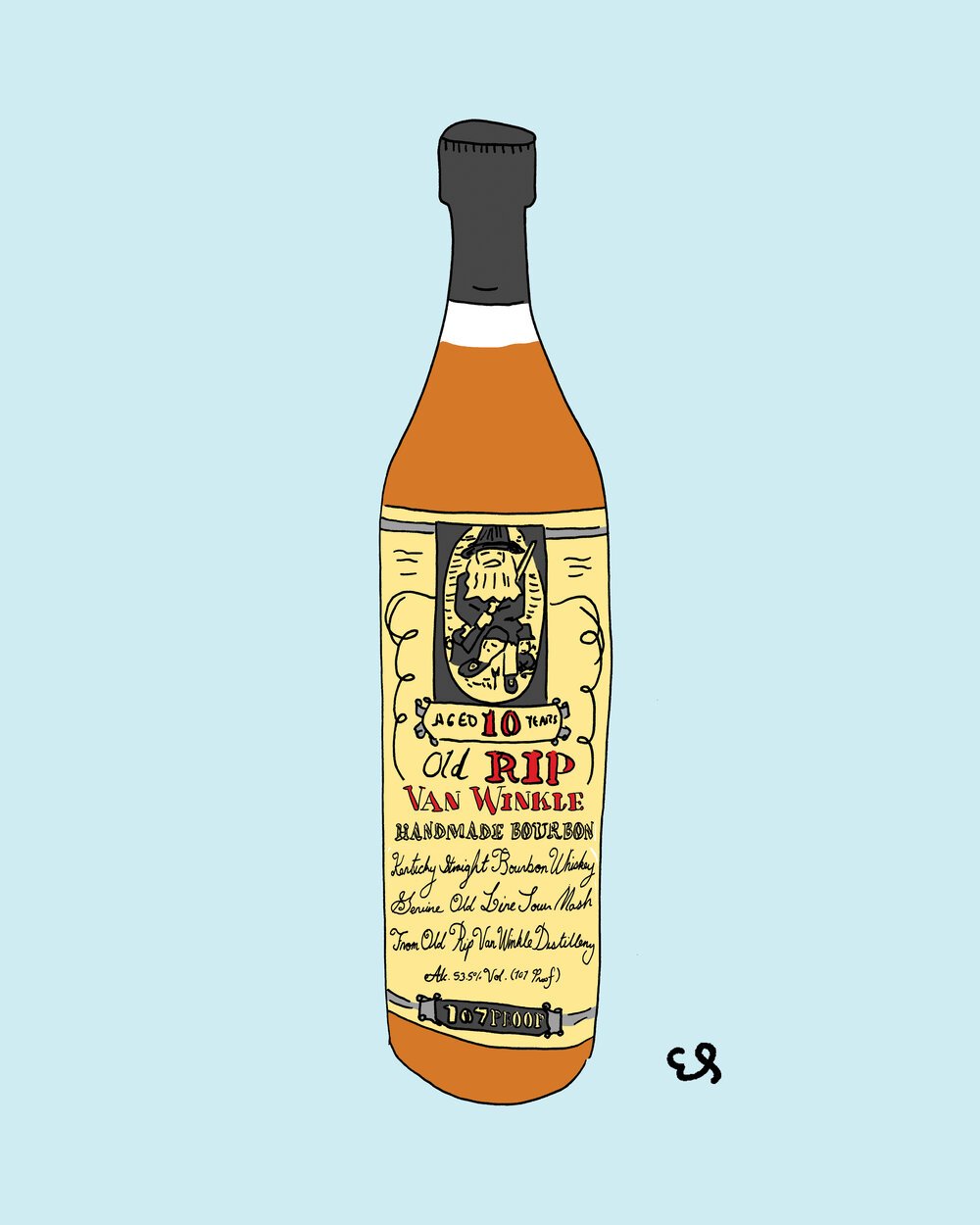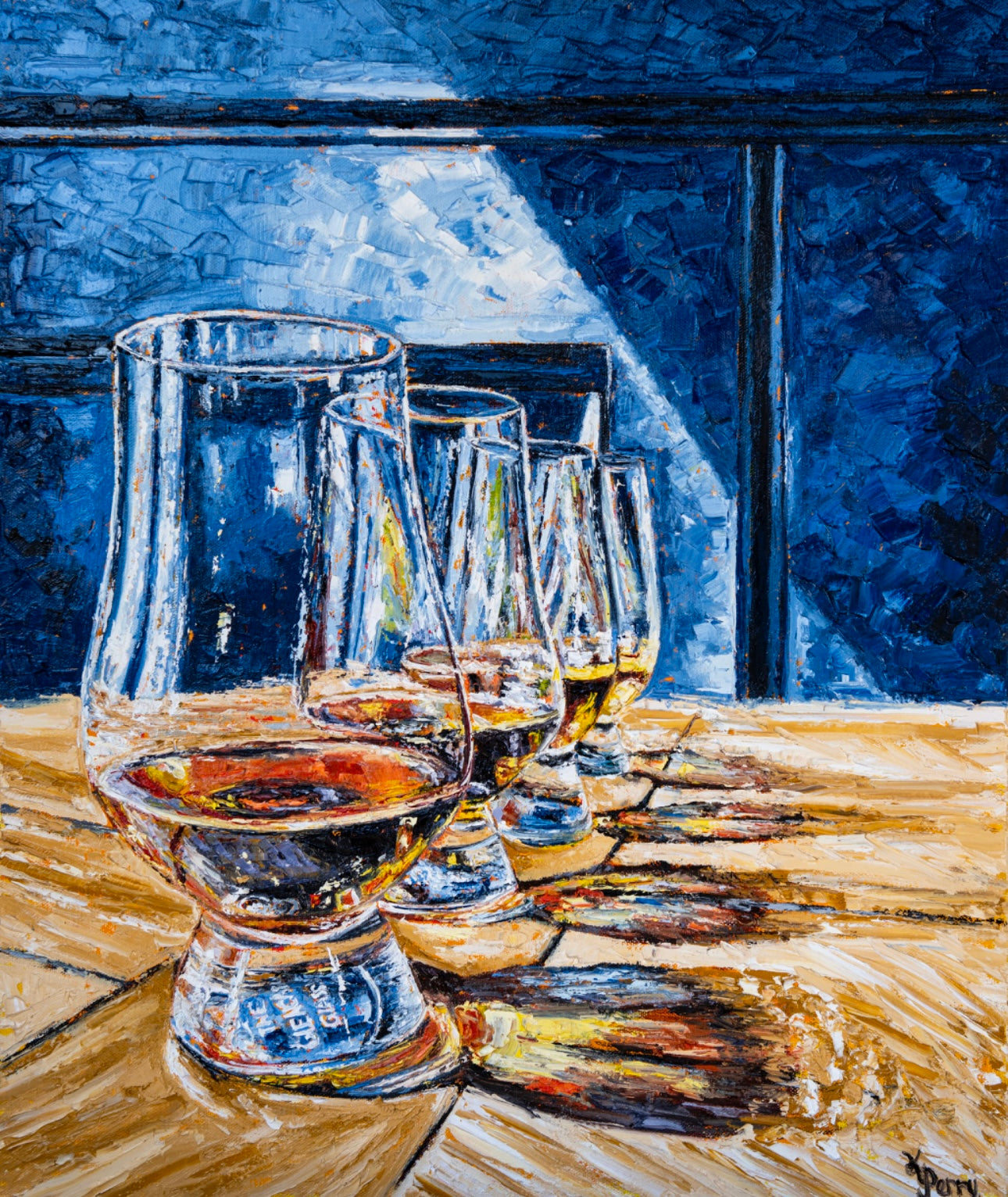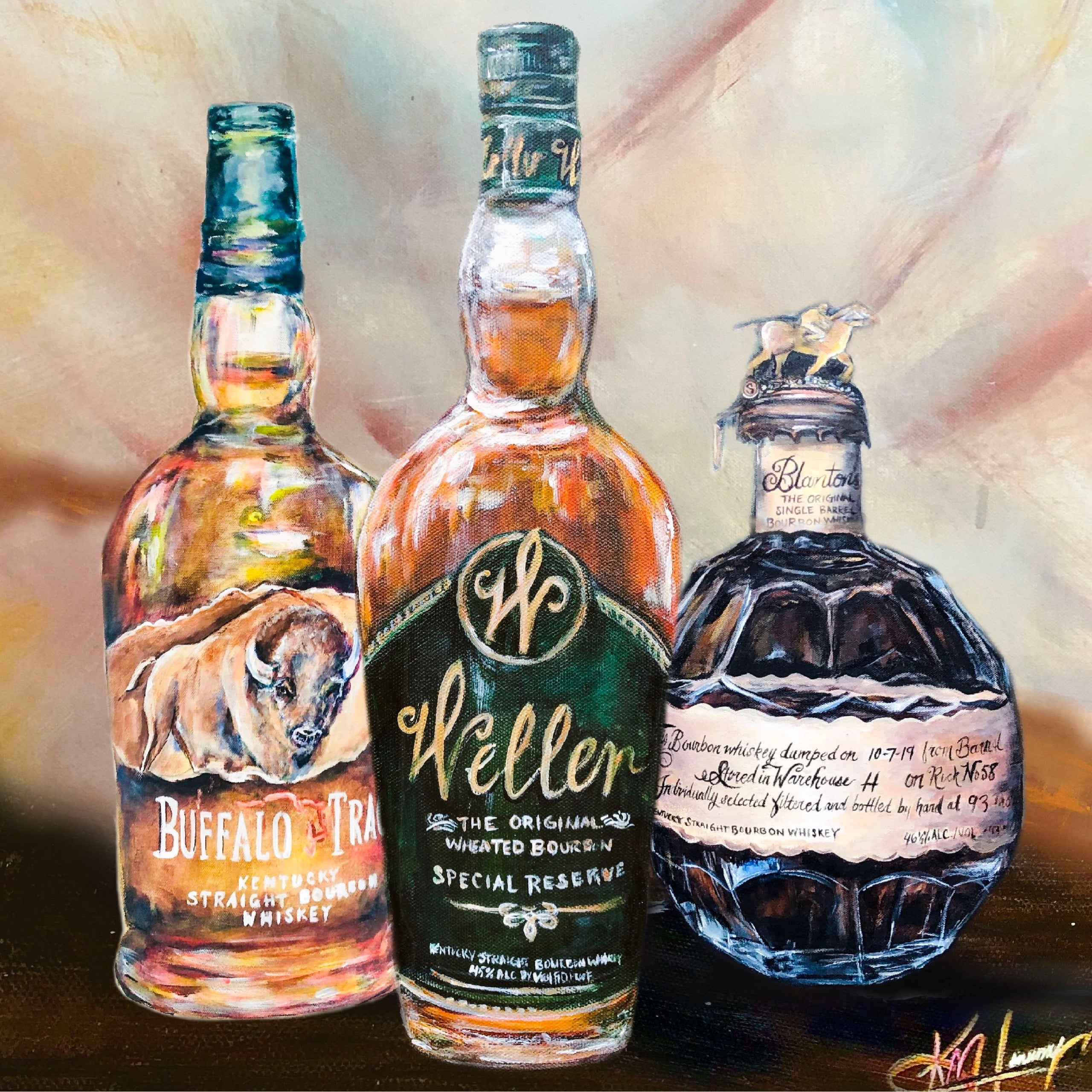Realism Art in the Whiskey Sector: Depicting Moments of Distillation
Realism Art in the Whiskey Sector: Depicting Moments of Distillation
Blog Article
The Value of Whiskey Art in Celebrating Heritage and Craftsmanship in the Beverage Sector
The complex connection in between scotch art and the celebration of heritage and workmanship within the beverage sector can not be overstated. Through attentively developed containers and labels, bourbon brands encapsulate their historical roots and the artisanal skills that specify their production approaches.
The Historical Origins of Whiskey
At the heart of bourbon's attraction lies a rich tapestry of historical roots that map back to ancient human beings. The origins of bourbon can be linked to the purification techniques of the Sumerians and Babylonians around 2000 BCE, where very early forms of fermented grain beverages started to emerge. It was in the Center Ages that the art of distillation developed dramatically, particularly in Ireland and Scotland, leading to the development of bourbon as we know it today.
The term "scotch" itself acquires from the Gaelic word "uisce beatha," meaning "water of life." This phrase highlights the social significance of whiskey in Celtic societies, where it was usually related to routines, parties, and public bonding. By the 15th century, purification came to be a recognized craft within monastic neighborhoods, leading the way for the facility of lawful distilleries.
As trade routes broadened, bourbon's popularity expanded, going beyond local boundaries and capturing the rate of interest of lovers worldwide. Limited Edition. This historic trip mirrors not only the craftsmanship behind scotch manufacturing however likewise its indispensable duty in social and social contexts, noting it as a substantial beverage throughout history
Artistic Expression in Branding
Bourbon branding stands as an engaging junction of virtuosity and business, where aesthetic identity plays a vital duty fit consumer understanding. The aesthetics of bourbon tags, product packaging, and advertising materials show not only the brand name's story but also its core worths and heritage. With creative expression, distilleries convey a narrative that reverberates with customers, evoking emotions and sparking links.
The use of shade, typography, and imagery in branding offers to separate products in a saturated market. Conventional concepts might evoke a feeling of authenticity and workmanship, while modern styles can signify advancement and forward-thinking. This strategic imaginative direction improves brand acknowledgment and loyalty, enabling customers to forge an individual relationship with the scotch they pick.
Furthermore, imaginative expression in branding usually serves as a party of regional heritage. Distilleries often include local signs or historic references into their styles, developing a sense of location that welcomes consumers to take part in a more comprehensive cultural experience. Ultimately, the creativity behind bourbon branding not just enhances visual appeal yet also enriches the general story of the brand name, fostering a deeper gratitude for the workmanship and heritage ingrained in each bottle.
Workmanship in Container Style
The virtuosity obvious in whiskey branding prolongs beyond aesthetic identity to include the craftsmanship associated with bottle layout. Each container acts as a vessel not just for the spirit within, however also for the tale it outlines its origin, quality, and custom. The layout process needs precise interest to detail, as aspects such as closure, shape, and material add significantly to the total understanding of the scotch.
Craftsmanship in bottle design entails choosing top notch glass that can boost the bourbon's shade and quality, while likewise providing a tactile experience for the customer. The shape of the container need to be both visually attractive and useful, commonly reflecting the heritage of the brand. Several distilleries select click for more distinct forms or printed logos that evoke a feeling of credibility and history.
In addition, the label style and typography sites play a critical duty in communicating the brand name's narrative. Limited Edition. A well-crafted container not only astounds the customer's eye but additionally enhances the brand name's dedication to top quality and custom. In this way, the workmanship of container design ends up being a crucial element of the scotch experience, combining creativity with an extensive respect for heritage
Social Importance of Scotch Art
Commemorating custom and craftsmanship, the cultural importance of scotch art transcends mere aesthetic appeals, linking with the historic and social stories of the areas from which it comes from. Each container serves as a canvas, portraying the special stories, mythology, and customs that have formed regional whiskey-making techniques. The elaborate styles typically mirror the heritage of the distillers, incorporating icons and motifs that reverberate with the culture and worths of their neighborhoods.

Additionally, scotch art plays an essential role in public events and celebrations, acting as a tangible link between individuals and their shared experiences. By appreciating the creativity in whiskey product packaging, customers grow a much deeper understanding and respect for the craft, ultimately enriching their enjoyment of the drink itself.
Modern Trends in Scotch Presentation
In the last few years, the discussion of scotch has actually advanced to reflect contemporary preferences and fads while still honoring conventional craftsmanship - Limited Edition. Distilleries are increasingly focusing on aesthetic components that boost the overall drinking experience, linking the space in between heritage and modernity
Ingenious bottle layouts have actually arised, typically integrating lasting products and imaginative tags that inform compelling tales. Lots of brands now collaborate with regional musicians, infusing their products with special aesthetic expressions that resonate with customers. In addition, limited-edition launches are commonly packaged in collectible containers, adding worth and appeal for lovers.

Final Thought
In conclusion, scotch art functions as an essential channel for revealing the heritage and workmanship inherent in the drink sector. Through detailed branding, cutting-edge bottle designs, and culturally significant creative elements, scotch brands efficiently recognize their traditions and connect with customers. This imaginative narrative not only raises the gratitude of bourbon but likewise enhances neighborhood identity and satisfaction amongst manufacturers. Inevitably, whiskey art plays a vital function in preserving and celebrating the rich cultural tapestry of whiskey-making.


Craftsmanship in container layout entails choosing top notch glass that can enhance the bourbon's color and clearness, while also providing a responsive experience for the consumer. In this way, the craftsmanship of bottle layout ends up being an essential element of the bourbon experience, merging creativity with an extensive regard for heritage.
In final thought, whiskey art offers as a crucial avenue for expressing the heritage and workmanship inherent in the beverage industry.
Report this page